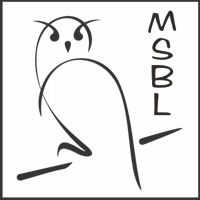


The Purpose of the EBL
The Email Blocklist (EBL) is intended to filter spam that is sent from IP addresses and domains that cannot be blocked without causing significant numbers of false positives. The EBL was orignally designed to list contact email addresses (or drop boxes) found in Reply-to headers and message bodies of spam emails.
The initial target of the EBL was "Nigerian" 419 advance fee fraud spam, most of which relies exclusively on drop boxes to provide recipients with a means to respond to the spammer's offer. Other types of spam that also make heavy use of drop boxes were added later, as research indicated that the email addresses in these spams were active and could be listed without impacting innocent users. These types of spam include fraudulent dating, hookup, and matrimonial ("Russian Bride") spams, manufacturers of inexpensive high tech and light industrial products, providers SEO/web development services, providers of direct spam services, sellers of lists for spamming, and a number of other operations selling legitimate and not-so-legitimate goods and services.
Pattern matching filters have been the best defense against these types of spam, but any such filter that catches spam also catches a some legitimate, non-spam email. These filters also require significant amounts of computing resources, slowing delivery.
When a pattern matching filter is used to observe email to spamtrap email addresses, however, the risks posed by false positives are much lower. The filter analyzes incoming spam, identifying and reporting drop boxes to the EBL listing engine. The listing engine vets incoming reports against a whitelist, and checks existing reports for the same hash. When it has seen a sufficient number of spam reports against a drop box, it lists that drop box.
Creating scripts to generate automated listings for the EBL is possible, feasible, and relatively easy because most spam drop boxes meet certain criteria:
In addition, the EBL contains a small but growing number of listings for email addresses used to send spam directly from a free webmail service. The typesof spam are similar to those that use drop boxes. Certain spam operations are aggressive and difficult to prevent from abusing a webmail service, and certain free webmail providers do not have effective outbound spam filtering.
The EBL also contains a small number of manual listings that meet the criteria but are not easily detected by automated methods. Most of these email addresses are used by specific spammers or spam operations that use URLs in their spam, but change their IP addresses and domains more frequently than they do their contact email addresses. These spammers can be detected by those email addresses more reliably than by IPs or domains.
Finally, the EBL contains a test entry, the SHA1 hash of noemail@example.com.
The relatively straightforward identification of drop box email addresses combined with many layers of error checking have resulted in an extremely low observed false positive rate for the past several months. Those few false positives that have been identified have prompted improvements to the trap server listing algorithms and the EBL listing engine, particularly the sanity checks and whitelist. Those features have driven the error rate even lower.